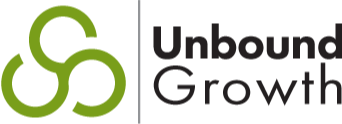I talk to salespeople daily, and one thing they all eventually tell me is - 'I need more pipeline.' In other words, 'I need to prospect more.'
The concept of prospecting seems simple- find more people to talk to that have problems you can help with. Why then is it so hard? Not only to commit to doing it, but then once you have committed to doing it- actually getting people's attention is not easy.
Especially if we talk first about what we care about.
The hidden reason why prospecting is so hard is the fear of rejection and need for approval. Even though we know we shouldn't, we take it personally- it is how we are wired. No one likes to be told no, and most people don't like to give bad news.
On the weekly #livesaleslab, we often share and practice prospecting ideas. Recently we talked about how to use inbound to go outbound.
First we had to define what we mean when we are talking inbound and outbound.
I related it to dating.

How Dating Is Like Prospecting
Dating is like prospecting in that you're going out and you're looking for someone to meet. You might go into places where you think they are, like a bar. (Until you realize you aren't likely to meet the right someone through the haze of smoke and liquor.) In sales, it might be the equivalent of trying to engage with decision makers at the conference after 2 hours of open bar at the conference. When you call the next day, they probably won't remember who you are, or what they said.
Or perhaps you have a list of people to call and a few one liners to try to engage them with on a cold call. It's like starting at one end of the bar and using the same, or similiar line, on each person as you move down the bar.
Those are some examples of outbound.
But if you go into a place all dressed up, hoping that someone's going to notice you,and sit there waiting until they do- that's inbound.
Using those two metaphors, how would you use inbound to go outbound?
Let's try it this way, imagine that you go into the bar. You're all dressed up and you're dolled up, and you sit down at the bar and look around. Nobody is approaching you but you see someone at the end of the bar who is giving you that look. You know "the look." What do you do? Do you ignore it? Or do you stand up, walk over and say, "Hey, I happened to notice that you were looking over here. What drew your attention?" and start a conversation.
How might this play out in the real sales world? I'll give you two examples.
Real World Example #1: Your Social Presence
If you have a LinkedIn subscription where you can see who is looking at your profile, and you see people that might an interesting prospect or someone interesting to talk to, look at their profile and see if you can find information like:
- What, or who, do you have in common? Reach out to them with something like; "I noticed that you were on my profile recently and that we have <Jane Smith>. How do you know her?" Don't pitch, make it long, or ask for a meeting. The goal is to start a human conversation.
- Have they written an article or done a presentation that says something intriguing that you think is either good, or bad or had never thought of before? Making a comment on that, share it and reach back out to them directly, and say something like; "Saw the article that you wrote about <X, Y, Z> and couldn't agree more about your point on <Z>. I have seen clients do that and seen great results. Would you be open to a conversation to compare notes?"
Real World Example #2: Website visitor intelligence
I use HubSpot execute and manage all my sales and marketing through the website. One of the things that it tells me is when companies that meet certain criteria visit my website. HubSpot will send me an email that says, "You have new prospects on your website." It tells me the company, but it doesn't tell me who the individual is.
So what can I do with this information? One thing you might do is go to LinkedIn, and research the company. Do you know anyone that works at that company? Or, do you know someone that does know someone that works at that company? Reach out to them directly.
I've done this before by taking a screenshot of the fact that there were 15 people from this company that looked at my website and simply asking them, "Noticed that there has been a lot of people from your company visiting my site, were you one?" Others who have tried a version of this had conversations that are now turning into real opportunities as a result.
That's just two examples of how you can use inbound to go outbound. The point is there is a lot of inbound information available to help you direct and warm up your prospecting efforts.
How are you using inbound intelligence to go outbound?






